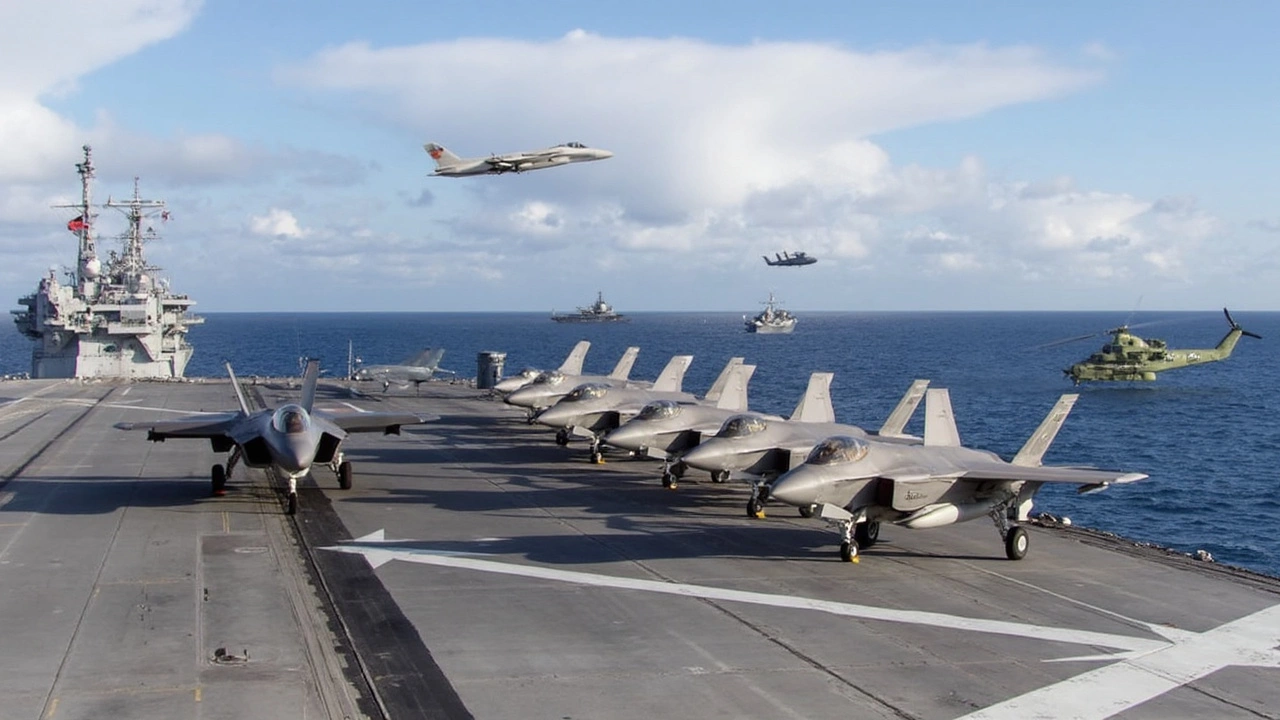HMS Prince of Wales Charts Course for Indo-Pacific Defense Collaboration
The sight of the Royal Navy's HMS Prince of Wales cutting through the waters of the Indo-Pacific is about to become reality. The flagship Queen Elizabeth-class aircraft carrier is scheduled for a high-profile port visit to Japan in spring 2025. But this isn't just a flag-waving stopover. It's the centerpiece of a wider British push to deepen military ties and back up talk of a 'free and open Indo-Pacific' with real action.
Japanese and British defense officials are treating this visit with weight. The carrier will host joint drills with the Japanese Self-Defence Forces—think deck landings, air defense coordination, and challenging maritime operations that test both navies. These aren't just scripted performances. They're designed to sharpen skills for situations ranging from humanitarian emergencies to high-stakes standoffs at sea, as tensions continue to bubble in the Indo-Pacific.
When UK Defence Secretary John Healey sat down with Japanese Defense Minister Gen Nakatani, the message was crystal clear: London and Tokyo want to be seen as reliable partners working for regional stability. Healey pointed to 'shared commitment'—code for more than military rituals. It’s about sharing intelligence, understanding each other's tactics, and sending a steady signal to countries both friendly and firmly on the fence.
Talisman Sabre 2025: The High Stakes in Regional Security
The spring deployment isn't just about UK-Japan action. The HMS Prince of Wales will head further afield to join Exercise Talisman Sabre 2025. This is one of the world's largest multinational military drills, led by the Australians and Americans, and the 2025 edition will involve a jaw-dropping 19 countries. It's not a drill in name only. The war games feature everything from live-fire missile launches to amphibious landings and sprawling maritime maneuvers that sprawl across thousands of miles of ocean.
For the British carrier strike group, it's an acid test. Crews will have to coordinate with unfamiliar units—South Korean destroyers, French submarines, Australian landing ships, and American fighter jets, among others. It’s a chessboard where interoperability counts as much as raw firepower. And for the UK, being in the thick of this exercise shows allies and adversaries alike that their Indo-Pacific ambitions run well beyond diplomatic banter.
Recent years have seen the UK steadily increase its Indo-Pacific presence. Last time, it was the HMS Queen Elizabeth that made headlines with its 2021 tour. But British planners say the 2025 deployment is scaled up—with more joint drills, deeper logistical support from partners like Japan, and a much clearer intent to stick around in the region. It's a sign the UK is betting that shaping Indo-Pacific security is worth the price tag, whether it’s in support of allies or acting as a check against regional instability.
The HMS Prince of Wales mission is more than ships and aircraft—it’s about building influence, boosting alliances, and showing the world that when big powers make promises about security, they can back them up with steel and resolve at sea.





